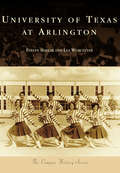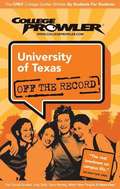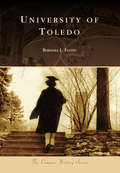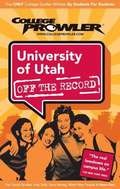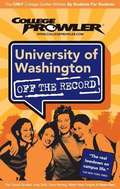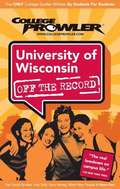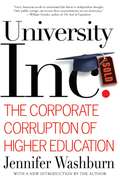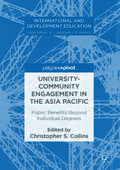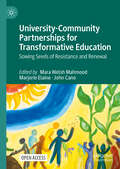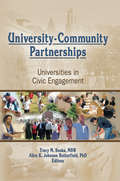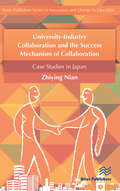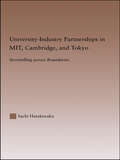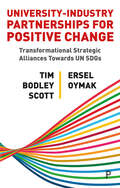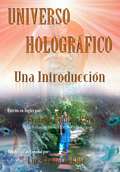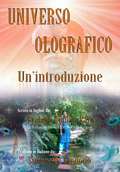- Table View
- List View
University of Texas at Arlington (Campus History)
by Lea Worcester Evelyn BarkerIn 1895, seventy-five students enrolled at Arlington College, an elementary and secondary institution located on the North Texas prairies. Over the next 120 years, the school changed into a military school, a vocational college, a two-year college in the Texas A&M System, and finally, a full-fledged university with more than 34,000 students from across the globe. Throughout its history, UT Arlington has benefitted from strong leadership and strong community commitment to education. During the low-enrollment period of the Great Depression, Dean E.E. Davis went into the cornfields of East Texas to recruit students. In World War II, art professor Howard Joyner switched from teaching fine art to teaching the art of camouflage painting. The turbulent 1960s saw students clashing over the school's rebel flag theme, the resolution of which paved the way for the university to become one of the most diverse in the nation today.
University of Texas at Austin (College Prowler)
by Erin HallCollege guides for each of the top colleges and universities in the US. While writing our series of college guides, we felt it was critical that our content was unbiased and unaffiliated with any college or university. We think it's important that our readers get honest information and a realistic impression of the student opinions on any college campus that's why if any aspect of a particular college is terrible, we (unlike a campus brochure) intend to publish it. While we do keep an eye out for the occasional extremist the cheerleader or the cynic we take pride in letting the college students tell it like it is. We strive to create a college guide that's as representative as possible of each particular campus. Our guides cover both the good and the bad, and whether the survey responses point to recurring trends or a variation in opinion, these sentiments are directly and proportionally expressed through our guides.
University of Texas at Austin: The First One Hundred Years (Campus History)
by Lori DuranThe University of Texas (UT) opened in 1883--38 years after Texas became a state and 7 years after the Texas Constitution called for the creation of a university of the first class. UT started off with 40 acres just north of Austin and with 221 primarily rural and local students. But since its founding, it has grown extensively and acquired worldwide prominence. Now, UT has 431 acres on its main campus and over 51,000 students enrolled from all 50 states and, at least, 124 different nations. UT is recognized as a top-rated state university, providing high-quality instruction and research. The university has also acquired architecturally interesting buildings, cherished traditions, and exciting sports programs over the years.
University of Toledo (Campus History)
by Barbara L. FloydIn 1872, Jesup W. Scott donated 160 acres of land to serve as an endowment for the Toledo University of Arts and Trades. Unfortunately, the university failed in its early years but was resurrected in 1884 by Scott's three sons, who gave the remaining assets to the City of Toledo to create a manual training school. By 1909, the institution was becoming a full-fledged university but struggled financially and did not have a permanent home. That changed in 1931 with the construction of the Bancroft Street campus, including the iconic University Hall, built in the Collegiate Gothic style. The University of Toledo remained a municipally supported university until 1967, when it joined Ohio's higher education system. In 2006, the University of Toledo merged with the former Medical College of Ohio, a state-supported institution founded in 1964. Today, the University of Toledo serves 20,000 students in degree programs as varied as medicine, law, engineering, business, education, pharmacy, nursing, and liberal arts.
University of Toronto: Campus Guide (The Campus Guide)
by Larry Wayne RichardsUniversity of Toronto: The Campus Guide, second edition, portrays the dramatic growth and development of Canada's largest university while it showcases some of the finest architecture and landscapes in eleven curated walking tours. Founded in 1850 and built in a pastoral setting outside the city limits, the renowned university now has more than 90,000 students at three distinguished campuses: the downtown Toronto St. George campus, the University of Toronto Mississauga, and the University of Toronto Scarborough. Extraordinary new photographs and beautifully illustrated maps bring to life the university's historical evolution, from the nineteenth century to the present. University of Toronto is the newest addition in the acclaimed Campus Guide series of leading colleges and universities in North America.
University of Utah (College Prowler)
by Jared WhitleyNo university affiliations. No half-truths. No out-of-touch authors who haven't been in school for decades. A class project turned company, College Prowler produces guidebooks that are written by actual college students and cover the things students really want to know. Unlike other guides that jam everything into a five-pound book and devote only two pages to each college, our single-school guidebooks give students only the schools they want and all the information they need. From academics and diversity to nightlife and sports, we let the students tell it how it is. In addition to editorial reviews and grades for 20 different topics, more than 80 percent of each guide is composed of actual student reviews of their school. Whether readers are looking for "Best and Worst" lists, "Did You Knows?" or traditions, College Prowler guides have it all. Our books are the only place for local slang, urban legends, and tips on the best places to find a date, study, or grab a bite to eat.
University of Vermont (Campus History)
by John D. ThomasSince 1800, the University of Vermont has pursued a progressive mission of enlightening individuals and, through them, society.When university president Daniel Sanders welcomed the first class of students into the school, he envisioned the college as a "temple of knowledge." Balanced against the demands of national development, cultural change, and increased emphasis on academic specialization, UVM has seen generations of students who are intellectually curious and utilize their education into the practical needs of society. University of Vermont tells the story of the students, curriculum, and campus through a unique collection of drawings, paintings, and photographs, many of which are published here for the first time.
University of Washington
by John D. Bolcer Antoinette WillsThe University of Washington was founded in 1861, when Seattle was a tiny village. It struggled to survive during its early years, but after Washington achieved statehood in 1889, the university grew along with the region it served. A world's fair on its campus attracted international attention in 1909. A century later, the University of Washington is known worldwide for research and teaching in fields ranging from arts and sciences to health sciences and high technology. With three campuses (Seattle, Tacoma, and Bothell), extensive programs of professional and continuing education, and hundreds of thousands of alumni, the University of Washington has grown beyond anything its pioneer founders could have imagined.
University of Washington (College Prowler)
by Katie ShawNo university affiliations. No half-truths. No out-of-touch authors who haven't been in school for decades. A class project turned company, College Prowler produces guidebooks that are written by actual college students and cover the things students really want to know. Unlike other guides that jam everything into a five-pound book and devote only two pages to each college, our single-school guidebooks give students only the schools they want and all the information they need. From academics and diversity to nightlife and sports, we let the students tell it how it is. In addition to editorial reviews and grades for 20 different topics, more than 80 percent of each guide is composed of actual student reviews of their school. Whether readers are looking for "Best and Worst" lists, "Did You Knows?" or traditions, College Prowler guides have it all. Our books are the only place for local slang, urban legends, and tips on the best places to find a date, study, or grab a bite to eat.
University of Wisconsin (College Prowler)
by Nicole RosarioNo university affiliations. No half-truths. No out-of-touch authors who haven't been in school for decades. A class project turned company, College Prowler produces guidebooks that are written by actual college students and cover the things students really want to know. Unlike other guides that jam everything into a five-pound book and devote only two pages to each college, our single-school guidebooks give students only the schools they want and all the information they need. From academics and diversity to nightlife and sports, we let the students tell it how it is. In addition to editorial reviews and grades for 20 different topics, more than 80 percent of each guide is composed of actual student reviews of their school. Whether readers are looking for "Best and Worst" lists, "Did You Knows?" or traditions, College Prowler guides have it all. Our books are the only place for local slang, urban legends, and tips on the best places to find a date, study, or grab a bite to eat.
University of the World
by Dieter LenzenIn this book, Dieter Lenzen analyzes the world's three major educational systems: the Continental-European, the Atlantic (Anglo-American) and the East Asian. Distancing himself from the current trend towards the economically driven Anglo-American system of education, the author proposes an alternative model, "a university of the world". Contents: · Three concepts of the university in the globalization process · The dynamics of global social systems · Global challenges in the post-secondary educational sector as springboard for comparing systems · Convergence and divergence: current system dynamics in the post-secondary sector · Can there be fair chances in a world university system? · Conclusion Target readers: · Theorists of higher education · Policy makers of higher education · Administrators of higher education · Social scientists The author: Professor Dr. Dieter Lenzen is the president of Universität Hamburg, vice president of the German Rectors' Conference (HRK) in Germany and the German universities' spokesperson for the HRK.
University, Inc.: The Corporate Corruption of Higher Education
by Jennifer WashburnJennifer Washburn, a scholar and journalist, reveals how the growing influence of corporations over universities compromises the future of all those whose careers depend on a university education, and all those who will be employed, governed, or taught by the products of American universities.
University-Community Engagement in the Asia Pacific
by Christopher S. CollinsThis edited volume provides a framework for understanding academic public good and offers case studies and perspectives as in depth examples of the ways in which colleges and universities engage with the community to produce social benefits. Focusing on the Asia Pacific region, the authors discuss examples of engagement that produce consciousness, partnerships, and services that are broadly available to the public and enhance the progress of society. The authors argue that, unlike an individual degree, these are public benefits that should be focused upon and featured more readily so that the breadth of university benefits come to be better understood.
University-Community Partnerships for Transformative Education: Sowing Seeds of Resistance and Renewal
by Mara Welsh Mahmood Marjorie Elaine John CanoThis open access edited volume reports on a unique network of innovative in-school and out-of-school programs, University-Community Links. UC Links connects university faculty and students with young people and their families in diverse communities around the world. Chapters in this volume describe programs in California and Utah in the United States as well as Germany, Italy, Spain, Uganda, and Uruguay. Together, authors craft stories of transformative models of education and what is possible when we bridge educational research and practice. Chapters offer strategies for co-creating learning environments that are innovative, collaborative, democratic, equity-oriented, and fun. By drawing lessons from authors’ collective and local histories, this volume helps to re-imagine educational practices, policies, and programs.
University-Community Partnerships: Universities in Civic Engagement
by Tracy Soska Alice K ButterfieldExamine how your university can help solve the complex problems of your community Community Outreach Partnership Centers (COPC) sponsored by the United States Department of Housing and Urban Development (HUD) have identified civic engagement and community partnership as critical themes for higher education. This unique book addresses past, present, and future models of university-community partnerships, COPC programs, wide-ranging social work partnerships that involve teaching, research, and social change, and innovative methods in the processes of civic engagement. The text recognizes the many professions, schools, and higher education institutions that contribute to advancing civic engagement through university-community partnerships. One important contribution this book makes to the literature of civic engagement is that it is the first publication that significantly highlights partnership contributions from schools of social work, which are rediscovering their community roots through these initiatives.University-Community Partnerships: Universities in Civic Engagement documents how universities are involved in creative individual, faculty, and program partnerships that help link campus and community-partnerships that are vital for teaching, research, and practice. Academics and practitioners discuss outreach initiatives, methods of engagement (with an emphasis on community organization), service learning and other teaching/learning methods, research models, participatory research, and "high-engagement" techniques used in university-community partnerships. The book includes case studies, historical studies, policy analysis, program evaluation, and curriculum development. University-Community Partnerships: Universities in Civic Engagement examines: the increasing civic engagement of institutions of higher education civic engagement projects involving urban nonprofit community-based organizations and neighborhood associations the developmental stages of a COPC partnership problems faced in evaluating COPC programs civic engagement based on teaching and learning how pre-tenure faculty can meet research, teaching, and service requirements through university-community partnerships developing an MSW program structured around a single concentration of community partnership how class, race, and organizational differences are barriers to equality in the civic engagement process University-Community Partnerships: Universities in Civic Engagement is one of the few available academic resources to address the importance of social work involvement in COPC programs. Social work educators, students, and practitioners, community organizers, urban planners, and anyone working in community development will find it invaluable in proving guidance for community problem solving, and creating opportunities for faculty, students, and community residents to learn from one another.
University-Industry Collaboration and the Success Mechanism of Collaboration
by Nian ZhiyingIn recent years, a considerable amount of effort has been devoted, both in industry and academia, towards the transformation of academic research at universities into the development of advanced technologies in industry, therefore enabling a full role of the university as a center of knowledge-creation.University-Industry Collaboration and the Success Mechanism of Collaboration presents recent developments in university-industry-collaborations, using case studies from Japan, and showing the mutual needs from both universities and enterprises in the knowledge-based society. Technical topics discussed in this book include: • Development of University-Industry Collaboration (UIC) in the world• Development of UIC in Japan• Case studies of UIC in Japan• Contribution of UIC from Japan to the world
University-Industry Partnerships in MIT, Cambridge, and Tokyo: Storytelling Across Boundaries (RoutledgeFalmer Studies in Higher Education)
by Sachi HatakenakaThe purpose of this study is to identify the nature of change taking place in university-industry partnerships, to understand the underlying factors that influence that change, and to explore the underlying process of change. Three in-depth case studies are considered, that of MIT, Cambridge University, and Tokyo University, to compare their experiences in developing new types of university-industry relationships. Hatakenaka argues that internal and external organizational boundaries have influenced the evolution of the new types of relationships, and that the three universities have defined these boundaries differently.
University: An Owner's Manual
by Henry Rosovsky"Superb. . . . Rosovsky has written an important book--probing, wise, shrewd, fair. . . . Deserves to be widely read." --James O. Freeman, Washington Post A view of America's colleges and universities and how they are run, the challenges they face and the issues that affect their "owners" - students, faculty, alumni, trustees and others. Among the issues covered are tenure, the admission process in elite institutions and curriculum.
University–Community Relations in the UK: Engaging Universities (Rethinking University-Community Policy Connections)
by John Diamond Carolyn Kagan“This is a fascinating, scholarly and informative synthesis of the history of UK community-university engagement and will be essential reading for anyone who wants to make sense of the past in order to progress future agendas in this area. A great read.”—Angie Hart, Academic Director, Community University Partnership Programme, University of Brighton, UK“This book is pertinent for an in-depth understanding of University-Community partnerships that challenge all European Universities. The notions of engagement, reciprocity or mutuality differ according to the socio-political context, civic traditions and social policies of the European regions. This book is a must read for those who want to make a difference in their Universities and their Communities.”—Maria Vargas-Moniz, President of the European Community Psychology Association.“Kagan and Diamond’s analysis of University-Community engagement in England, is highly relevant for the challenges facing higher education in many places but particularly in Mexico where higher education has to move from existing verticality and authoritarianism, to become socially more relevant.”—Eduardo Almeida Acosta, Universidad Iberoamericana, Mexico.This book examines and analyses the complex and contradictory relationships between Higher Education Institutions in England and their local communities within a wider political and policy context. It provides an overview of the UK university system which has a long tradition of a mixed pattern of relationships with communities. The book critically explores the academic spheres of teaching and learning, third stream activities and research, showing how the ways in which different initiatives supported by national policy and funding bodies have shaped the relationship universities have with their communities as well as the opportunities and challenges institutions now face to develop and transform these relationships.
University–Industry Partnerships for Positive Change: Transformational Strategic Alliances Towards UN SDGs
by Tim Bodley-Scott Ersel OymakRobust university–industry partnerships are vital to achieve the 17 UN Sustainable Development Goals (SDGs) and create a better world for everyone. Developing the theory and practice of the ‘5th Generation University’, this book shows how cross-sector collaboration and innovation are crucial to maximising the societal benefits of research, education and knowledge exchange, while also driving economic growth and productivity. The authors bring extensive experience in working at the interface between academia, industry and government to demonstrate how universities can effectively combine transdisciplinary programmatic activities and strategic corporate philanthropy. They explain how long-term alliances can be forged to have a transformational impact on the greatest challenges facing our world such as climate change.
Universitäre Förderung medienfachdidaktischer Wissensfacetten und medienbezogener Überzeugungen angehender Lehrkräfte: Eine Betrachtung der Nutzbarkeit multimedialer Lehr-Lerntools (Economics Education und Human Resource Management)
by Katharina DepréBedingt durch die digitale Transformation nehmen digitale Medien im Unterricht einen immer größeren Stellenwert ein. Eine systematische Förderung medienbezogener Unterrichtskompetenzen kann Lehramtsstudierenden daher den Einstieg in den Berufsalltag erleichtern. Der innovative Einsatz multimedialer Lehr-Lerntools in der Hochschulpraxis ermöglicht dabei den Studierenden, selbstgesteuert Kompetenzen zu erwerben. In diesem Buch wird anhand von Daten aus Prä-Post-Messungen mit Interventions- und Kontrollgruppe die Nutzbarkeit von zwei multimedialen Lehr-Lerntools zum Einsatz digitaler Medien im Unterricht analysiert. Untersucht wird, ob angehende Lehrkräfte durch die Bearbeitung der beiden Tools in ihrem medienfachdidaktischen Wissen sowie in ihren medienbezogenen Überzeugungen gefördert werden und ob diese kognitiven und affektiv-motivationalen Dispositionen miteinander zusammenhängen. Der Upload der Lehr-Lerntools und der Evaluationsmaterialien als Open Educational Resources leistet einen effektiven Beitrag in der Qualitätsentwicklung der (berufsbildenden) Lehrkräftebildungspraxis und -forschung.
Universo Holográfico: Uma Introdução
by Brahma Kumari Pari Aline SassonNeste livro, as explicações sobre o Universo Holográfico estão baseadas na Mecânica Quântica, no conhecimento da Brahma Kumaris, em pesquisas, em experiências da autora, no conhecimento dos chacras e da aura, nos antigos textos Hindus, na orientação de Deus, etc. Há explicações neste livro sobre: As várias divisões e a natureza do Universo Holográfico. Como as energias quânticas materializam o corpo físico e o mundo físico através do Universo Holográfico. Como as pessoas vivem em dois tipos de mundos, o Mundo Real e o Mundo Holográfico, ao mesmo tempo. Como as energias quânticas de diferentes dimensões materializam um tipo diferente de Mundo Real para que vivamos nele. Como as dimensões sutis, corpos holográficos e corpos sutis são criados. Como acontece o processo de criação através e vórtices e chacras. O filme Holográfico do Holograma do qual participamos. Como o Universo Holográfico muda quando o mundo se transforma. Como tudo acontece de acordo com o Drama do Mundo (Registros Akáshicos). A Meditação e o Conhecimento d Brahma Kumaris. Como a aura é usada durante as experiências. Como existem vários tipos de mundos. A Consciência Cósmica. Experiências de Quase-Morte. As explicações neste livro, no Universo Holográfico, ajudarão o leitor a compreender o conteúdo do livro “Enriqueça na Caminhada para o Mundo da Era de Ouro (com Comentários de Meditação)”. Maiores explicações sobre o Universo Holográfico também serão encontradas no livro da autora “Enriqueça na Caminhada para o Mundo da Era de Ouro (com Comentários de Meditação)”.
Universo Holográfico: Una Introducción
by Brahma Kumari Pari Luis Rentería RuizMediante la lectura de este libro, usted tendrá una mejor comprensión del Universo Holográfico y se incrementará su habilidad para tener experiencias en él. Al mantener una mente clara y abierta (conforme avanza en su lectura), puede experimentar lo que el vivido y será capaz de entender lo que el autor está explicando. No considere el libro simplemente un "material de lectura", vaya más allá de las palabras y leálo con la intención de comprender a profundidad lo que se explica. Su capacidad de contemplar y experimentar el Universo Holográfico aumentará mientras continúe leyendo este libro una y otra vez hasta que lo haya comprendido.
Universo Olografico: Un'introduzione
by Brahma Kumari Pari Simona De GregorioUn'introduzione all'Universo Olografico, passando per i vari mondi coinvolti, i chackra, Dio stesso, le anime e le conoscenze BK.
Unjournaling: Daily Writing Exercises That Are Not Personal, Not Introspective, Not Boring!
by Dawn DiPrince Cheryl Miller ThurstonSome students just don't want to share intimate details about their thoughts, feelings and lives—at least, not with others in a class or group. That's where Unjournaling comes in. All the writing prompts in this book are entirely impersonal but completely engaging for both kids and adults.Two examples of the 200 writing prompts include:Write a paragraph about a girl named Dot, but use no letters with a dot (in other words, no i or j).Why on earth would Yankee Doodle stick a feather in his cap and call it “macaroni”? Come up with a plausible explanation.The book includes sample responses to all of the questions—a helpful tool for anyone who gets stuck with a topic and wants to see how it can be done!Grade 7-Adult
